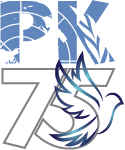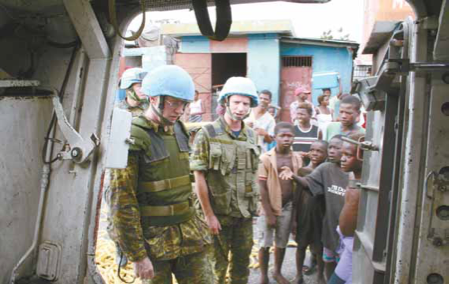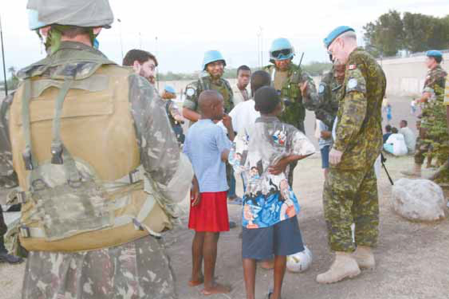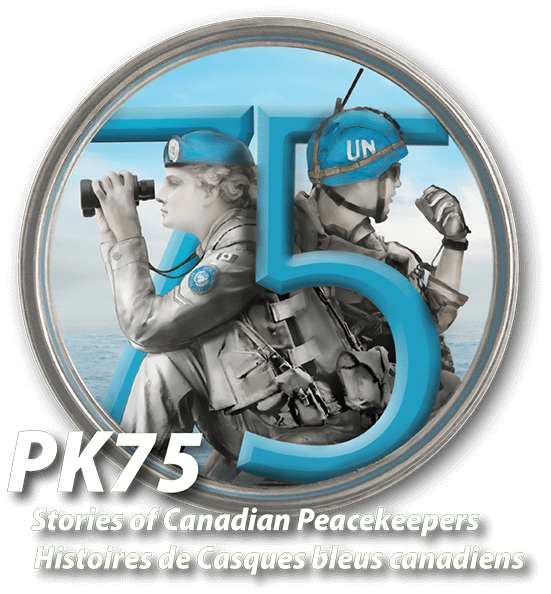

The United Nations Stabilization Mission in Haiti (MINUSTAH) ran from 2004 to 2017. I was deployed there for a year to be Chief of Staff to the Force Commander, a three-star general from Brazil. It was a fascinating way to end my military career.
The military mission was staffed by about 8,000 soldiers from all over the world including Central and South America, Jordan, Nepal, and the Philippines. The mixture of cultures, religions, customs, and traditions was very interesting to someone like me who had worked mostly with militaries from North America, Europe, and Africa during my career. Also deployed on the mission were United Nations Civilian Police Forces from around the world, including from the Royal Canadian Mounted Police.
The most interesting part of my job was my weekly visit, on behalf of the Force Commander, to one or more of the UN military units deployed throughout Haiti. It usually meant a ride in a UN helicopter to a different part of the island to check in with the commanders of the various troop contributing nations to confirm that they were aware of what the Force Commander expected of them and to listen to their concerns about their unit’s mission, accommodations, or the level of support they were receiving from the Force Headquarters.
The pride each unit took in representing its country on the mission was obvious the moment you arrived in each unit location. Never was it more obvious than if you were lucky enough to be invited to a unit on their National Day, a celebration of their country’s founding. The excitement in each military encampment was palpable as the national flags, dishes, music, and culture were on full display throughout the day. Each unit tried to outdo the other, so it seemed that the celebrations got more intricate as the year progressed.
There was a serious side to the mission as well. Gang violence, which had gripped Haiti for so many years, made the country almost ungovernable. Kidnapping and extortion had become rampant. In December 2006, the Force Commander decided that he needed to clear the criminal gangs out of the Cite Soleil area near the international airport in the capital, Port-au-Prince. In January 2007, in a series of night raids, some involving up to 1,000 UN troops, along with UN and Haitian National Police forces, the UN managed to eliminate or capture many of the gang leaders. These actions brought peace to that area of the capital city for the first time in many years.
On 15 July 2007, the day before I left Haiti, I was invited by my Brazilian and Argentine colleagues to watch the Copa America Final between Argentina and Brazil. Would this be my most dangerous mission in Haiti? The passion for football (soccer) in each of these countries is legendary and it was on full display as we watched the match together. Brazil won 3–0 in a fast paced and thrilling encounter. The respect that each group of officers had for one another transcended their great football rivalry and they all returned to work the next morning ready to continue the mission together.
A catastrophic magnitude 7.0 Mw earthquake struck Haiti at 16:53 local time on 12 January 2010, killing thousands of Haitians and 102 UN staff officers — the single greatest loss of life in the UN’s history. The reminiscence of the UN personnel that I worked with during my year in Haiti, some of whom lost their lives during the earthquake and the memories of the amazing soldiers I worked with in Canada and around the world are some of the most cherished memories of my military career.
Biography
I was born and raised in St. Lawrence, a small fishing/mining community on the southeast coast of Newfoundland. Being the second youngest of 12 children, I knew that the only way I would get to university was if it was somehow paid for by an outside agency. So, in 1971, at the age of 16, I joined the military under the Regular Officer Training Program and graduated in 1976 from Memorial University of Newfoundland with a Bachelor of Physical Education degree. While at university, I played Soccer for the Varsity team and was lucky enough to be selected to play for the NL Soccer team at the Canada Summer Games in 1973 in BC, and the Canadian National Soccer Team at the Pan American Games in Mexico City in 1974. The immense pride with which athletes from across the Americas represented their countries in Mexico City became mirrored in the faces of soldiers I served with on various missions throughout my career.
While at university, I was very fortunate to meet my lovely wife, Florence. We have been together through 46 years of marriage, two children, four grand children and thirteen postings during my 31 years of regimental duty (including three one-year postings) and three moves since our retirement. It takes a strong, dedicated woman to do that, and she has done so much more consistently over the years. The dedication and determination of my Army wife has always impressed and amazed me throughout our time together.
My Army career included postings to all three units of The Royal Canadian Regiment. I am proud of the fact that I spent seventeen of the thirty-one years of my military career in infantry battalions. I consider myself very lucky to have served eight years with the 3rd Battalion at Canadian Forces Base Baden, Germany. The opportunity to live and work in Europe with the Canadian Army and to train with the German and U.S. Forces on many high-level exercises was a highlight of my career. Travelling around Western Europe while exploring its culture and history was certainly a bonus. Our unit tours to World War I and II battlefield sites with Canadian veterans and historians were at the top of the list. When the Berlin Wall came down in 1989, I think anyone who had ever served with the Canadian Armed Forces in Europe felt happy to have played a small part in bringing it down. Being part of the team that closed out the Canadian Army’s commitment to NATO in 1993 was also a bittersweet moment.
One of my more interesting assignments in Canada was helping Canadians from Winnipeg and the surrounding area deal with the “Flood of the Century” in April and May of 1997. It felt good to help fellow Canadians recover from a major natural disaster after assignments to other parts of the world.
My first United Nations posting came in my first year in the Army when I was deployed with 2nd Battalion, The Royal Canadian Regiment to Cyprus in the fall of 1977. It was my first tour of duty, while some of my Non-Commissioned Officers were on their second or third tours to that Mediterranean island. I learned a lot about the dedication of Canadian soldiers to keeping the peace between two factions of citizens who share the same island, but not the same views on how it should be governed. Our interactions with our fellow United Nations contingents and United Nations Civilian Police forces were an early lesson on cooperation between soldiers and police forces from various troop contributing countries.
In 2001, I was the only one in the conference room at the Directorate of Army Training who could not raise his hand when the general asked who had been on a deployment abroad in the previous five years. The military works that way sometimes. So, I “volunteered” to lead a team of 12 Canadian military personnel to work with the British Army in their former colony of Sierra Leone in West Africa as part of the International Military Assistance and Training Team (IMATT). Its job was to help train the newly formed Royal Sierra Leone Armed Forces to fight the Rebel United Front and hand the country back to civilian leadership. When we arrived, the British and Sierra Leonean soldiers controlled the capital of Freetown and the military training centre located 20 kms north of the city. When we left six months later, the RSLAF had control of nine of the country’s ten provinces and the people were getting ready to go to the polls to elect a government.
When I returned from a year long United Nations tour in Haiti in 2007, I joined a company in Kingston, ON which designs and delivers training exercises for the Canadian Armed Forces and the Government of Canada. I worked for seven years as a full-time member of the team and a further five years as an independent contractor helping the full-time team design exercises. The last exercise we worked on for the Public Health Agency of Canada was a scenario based on a global pandemic that originated in China. Maybe that is why they never called us back…?

Col (Ret) Thomas Tarrant and Maj Mark Sullivan inspecting an armoured personnel carrier on security detail in Cité Soleil. PHOTOS: MINUSTAH MILITARY PAO

COS and a Brazilian platoon commander during a CIMIC visit with children playing soccer in Port-au-Prince.


